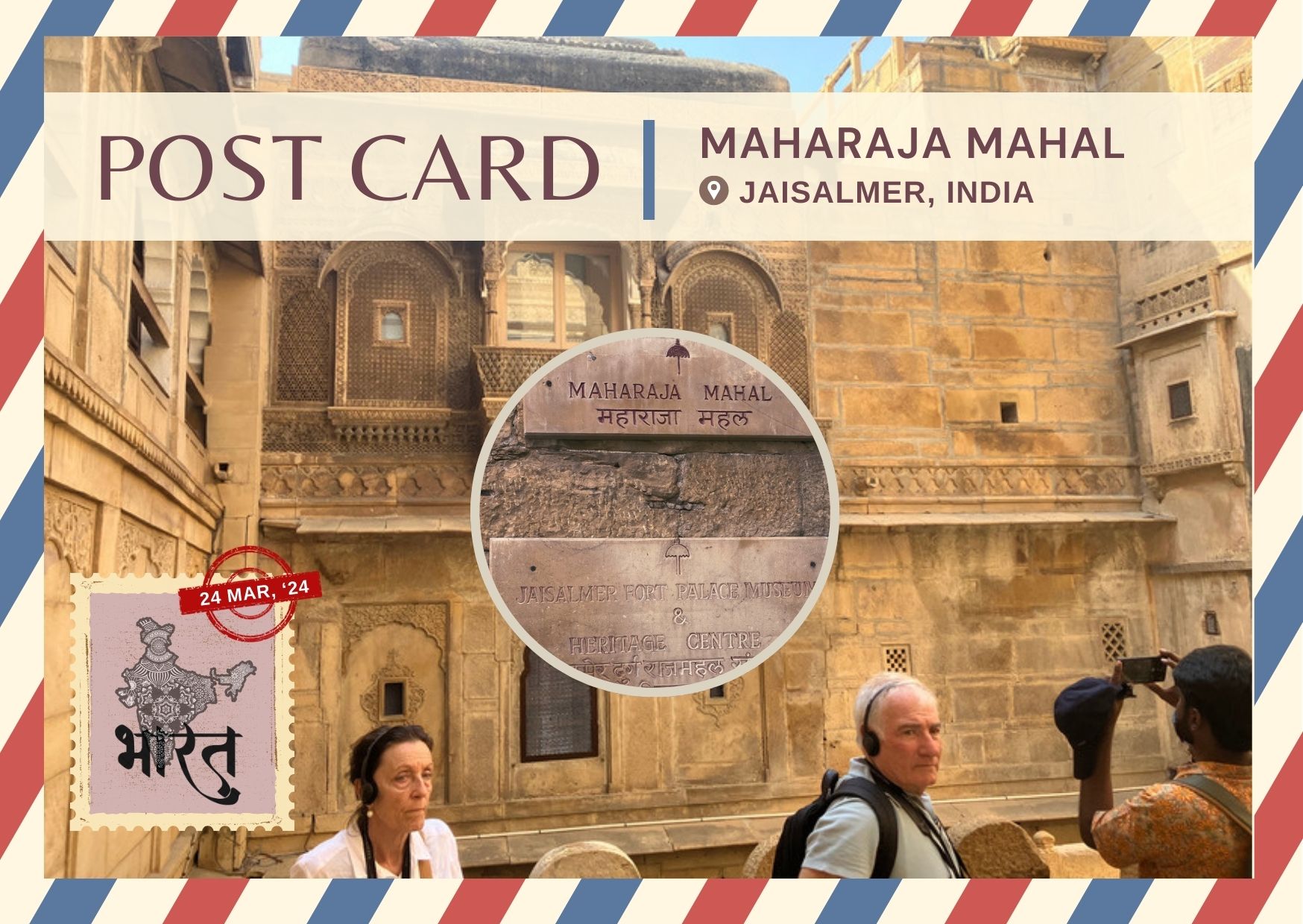On the following day of our excursion to Jaisalmer, we visited the iconic Maharaja Mahal within the Jaisalmer Fort. The palace, constructed around the 12th century by Maharaja Jaisal Singh, was initially intended as a royal residence. Indeed, Jaisalmer proudly inherits his name from him. Standing tall and elegant, its golden sandstone walls, intricately carved with exquisite designs and motifs, stood as a testament to the opulence and grandeur of the royal heritage.
Grand entrance left me spellbound, and the fort, rising like a golden sentinel against the desert landscape, is one of the largest forts in the world. The sandstone glowed in the sunlight, casting a warm hue over the entire complex. It was as if time had stood still, preserving the essence of a glorious past.
The Durbar Hall, a jewel within the palace, stole our breath away. Its walls adorned with intricate mirror work and captivating paintings transported us to an era of splendour. Mythological and historical scenes came alive through sculptures and carvings, narrating tales of valour and love.
What truly sets the Maharaja’s Palace apart is its living spirit. Unlike other forts frozen in time, this one thrives with activity. A bustling community of around 5,000 people, primarily descendants of Brahmin and Rajput families, call this place home. Their laughter, stories, and daily lives echo through the ancient courtyards, making it the only living fort in India, perhaps even the world.
While exiting, I felt a deep connection to the past. Maharaja Jaisal’s vision had transcended centuries, leaving behind a legacy that continues to breathe and thrive.
Unveiling the Time-Traveling Marvel: Maharaja Mahal in Jaisalmer

